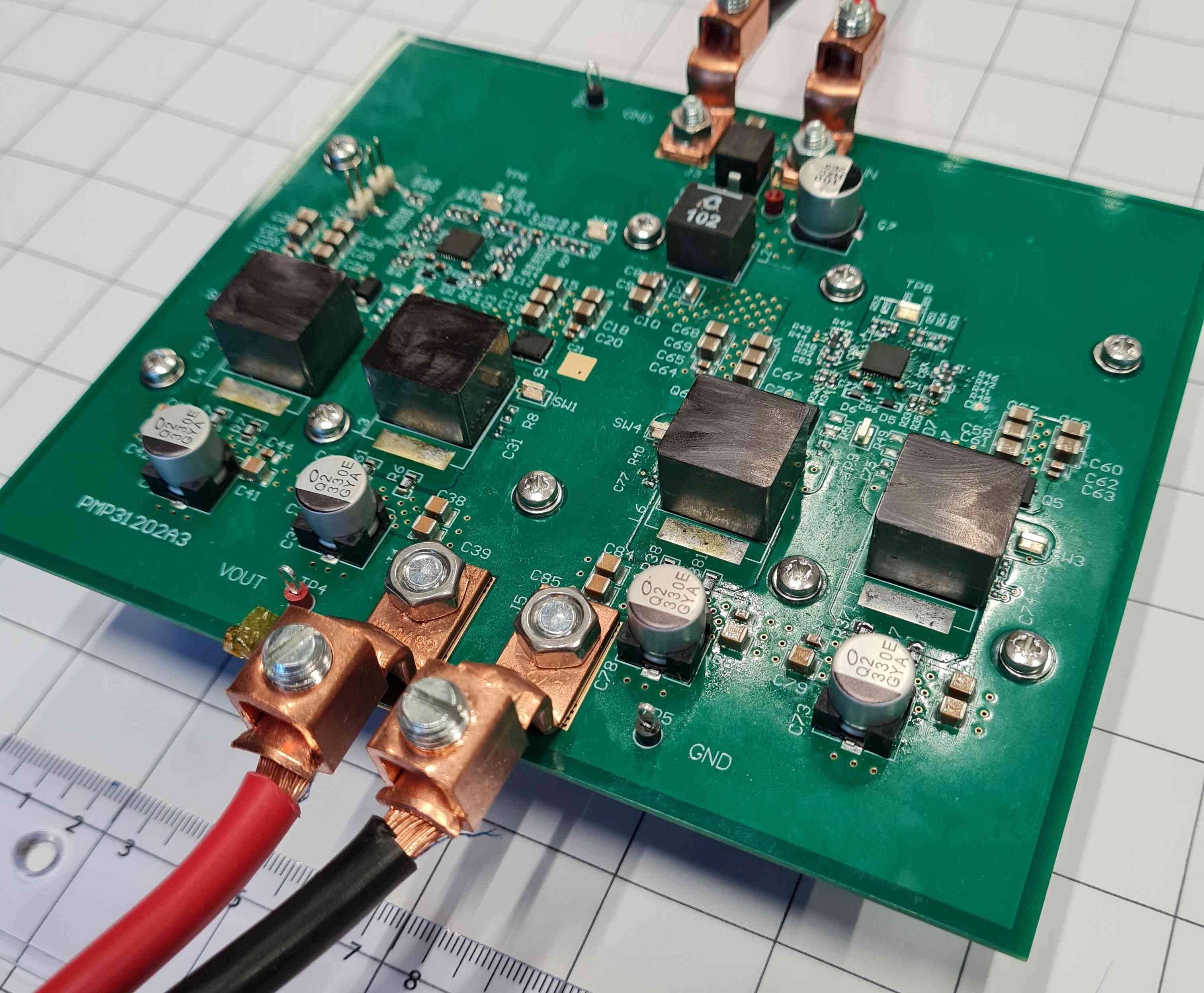TIDT319 December 2022
- Description
- Features
- Applications
- 1Test Prerequisites
- 2Testing and Results
- 3Waveforms for 2 × LM5143A-Q1 in Four Phase Configuration and Interleaved Operation
- A Individual Adjusting of the Rising Edge and Falling Edge With LM5143A
- B Measurements Across the Low-Side FETs to Check at All Four Phases
- C ON Demand – Assembly of Thermal Interface
1.2 Considerations
Unless otherwise indicated, all measurements were done with 24-V input voltage and 50-A output current.
The load used was an electronic load TDI RBL100-120-800, limited to 800 WMAX, squeezed up to 828 W; the source was the SMPS Agilent 6574A, limited to a maximum 35-A input current, squeezed up to 35.8 A.
Efficiency and thermal image measurements up to 60-A continuous current are provided, but with a proper thermal interface there is still some headroom left – the current limitation trips at around 70 A.
Unless otherwise indicated, an air flow of 0.5 meters per second (m/s) to 1 m/s was used for the first measurements.
 Figure 1-1 Board Image With Connected
Cable
Figure 1-1 Board Image With Connected
Cable